#コーアン
Explore tagged Tumblr posts
Text



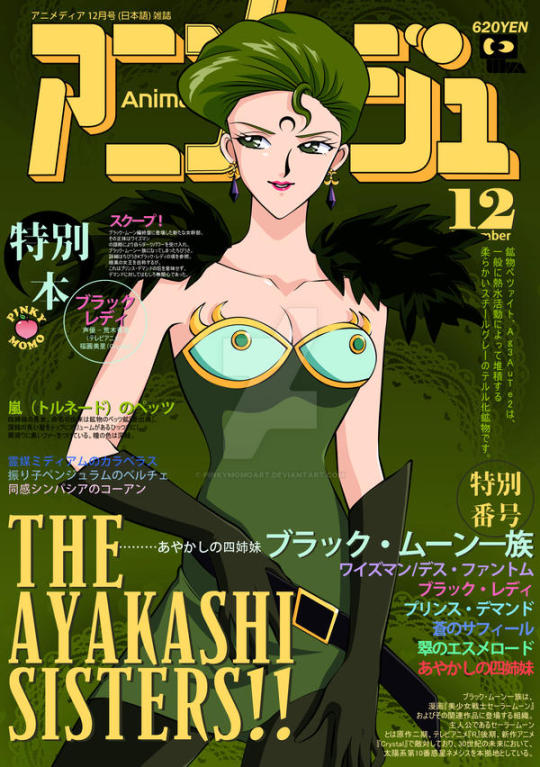
Pinky Momo
#あやかしの四姉妹#Four Specter Sisters#Black Moon Clan#Sailor Moon#Sailor Moon R#Kōan#Koan#コーアン#Berthier#Beruche#ベルチェ#Petz#Pettsu#ペッツ#Calaveras#Karaberasu#カラベラス#pixiv#artists on pixiv#source: pixiv
98 notes
·
View notes
Photo
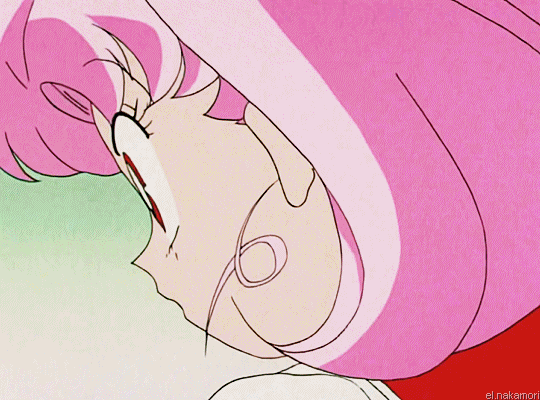
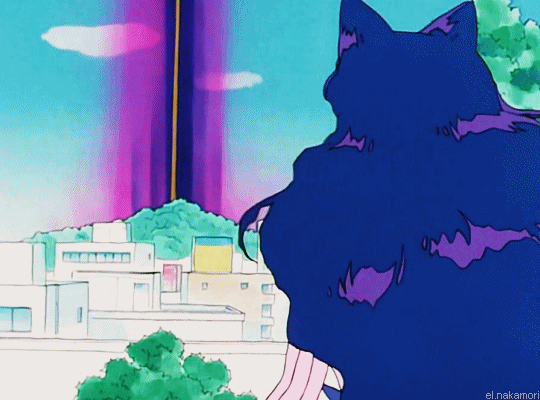
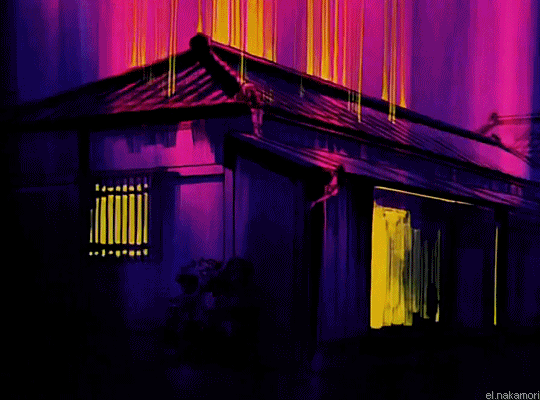

第60話 「天使?悪魔?空から来た謎の少女」
#el.nakamori#El Nakamori#第60話 「天使?悪魔?空から来た謎の少女」#天使?悪魔?空から来た謎の少女#Sailor Moon R#Sailor Moon#Bishojo Senshi Sailor Moon R#Bishojo Senshi Sailor Moon#Usagi#Tsukino Usagi#Usagi Tsukino#KOAN#美少女戦士セーラームーンR#美少女戦士セーラームーン#セーラームーンR#セーラームーン#ちびうさ#月野うさぎ#コーアン#あやかしの四姉妹#ブラックムーン一族#ブラックムーン#Ayakashi No Yonshimai#BLACK MOON
65 notes
·
View notes
Photo

コーアン
◆CLIP STUDIO PAINT ◆
リベンジ✨
33 notes
·
View notes
Photo

セーラームーン/あやかしの四姉妹 同感のコーアン
3 notes
·
View notes
Photo

Back to black for ‘23 #backtoblack #spacebuns #iveenteredmykoanera #コーアン #コーアン #koan #koansailormoon #spectresisters #snakeprint #newyears2023 https://www.instagram.com/p/Cm3gEcWPkrd/?igshid=NGJjMDIxMWI=
#backtoblack#spacebuns#iveenteredmykoanera#コーアン#koan#koansailormoon#spectresisters#snakeprint#newyears2023
0 notes
Photo
Real life Makoto Kino after Sailor Mars and Sailor Mercury get captured by Koan, Berthier, and Rubeus


i’m filling the void with adopting as many plants as possible
#sailor moon#pretty guardian sailor moon#pretty soldier sailor moon#bishoujo senshi sailor moon#bishōjo senshi sailor moon#bisyouzyo sensi sailor moon#美少女戦士セーラームーン#makoto kino#kino makoto#木野まこと#sailor mercury#セーラーマーキュリー#sailor mars#セーラーマーズ#berthier#ベルチェ#koan#コーアン#rubeus#ルベウス
66K notes
·
View notes
Photo

among us. pake brushpen kok pada fray semua.. 😐 likes, shares, saves and comments are appreciated. #sketch #artista #artoninstagram #artstagram #artistofinstagram #painting #arts #arte #instaart #artist #design #calledtobecreative #creativityfound #graphicdesignコーアン #illustagram #amongus #amongusfanart https://www.instagram.com/p/CG_dsEOn6GS/?igshid=6464nwsu94yx
#sketch#artista#artoninstagram#artstagram#artistofinstagram#painting#arts#arte#instaart#artist#design#calledtobecreative#creativityfound#graphicdesignコーアン#illustagram#amongus#amongusfanart
1 note
·
View note
Photo

New artwork Samurai Check bio📲 You can buy me a coffee And support my artwork Listen my podcast for free on spotify Or music. Check my shop and be unique. Yea know Watts mean like?😁 . . . . . . . . . . . . #design #interiorstyling #doitfortheprocess #makersmovement #calledtobecreative #creativityfound #garden #pattern #graphicdesignコーアン #illustagram https://www.instagram.com/p/CKxeCOrpBfO/?igshid=1u9fyrvfm7813
#design#interiorstyling#doitfortheprocess#makersmovement#calledtobecreative#creativityfound#garden#pattern#graphicdesignコーアン#illustagram
0 notes
Photo
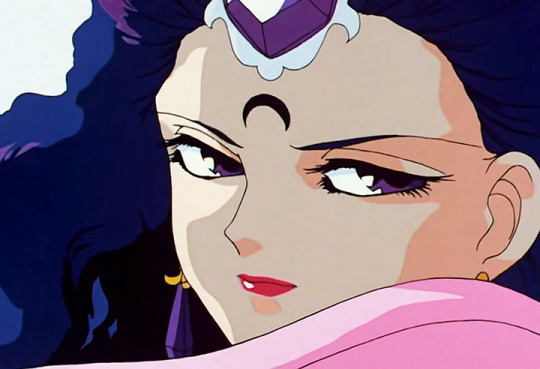
第60話「天使?悪魔?空から来た謎の少女」
#el.nakamori#El Nakamori#Sailor Moon R#Sailor Moon#Bishojo Senshi Sailor Moon#Bishojo Senshi Sailor Moon R#KOAN#第60話「天使?悪魔?空から来た謎の少女」#天使?悪魔?空から来た謎の少女#美少女戦士セーラームーン#美少女戦士セーラームーンR#セーラームーンR#セーラームーン#ブラックムーン一族#ブラックムーン#コーアン#Ayakashi Sisters#あやかしの四姉妹
146 notes
·
View notes
Photo

A room is not a room without natural light 😉. Follow for more @deep_chirag10 Design ; concept and interior by Ar. @deep_chirag10 #sketch #artista #artoninstagram #artstagram #artistofinstagram #painting #arts #arte #inst #aart #artistdailyart #100dayproject #cloudpainting #the100dayproject #illustrator #painting #artaccount #100daysofart #paintings #artistsoninstagram #design #interiorstyling #doitfortheprocess #makersmovement #calledtobecreative #creativityfound #garden #pattern #graphicdesignコーアン #illustagram https://www.instagram.com/p/CbkCP9tP6Aa/?utm_medium=tumblr
#sketch#artista#artoninstagram#artstagram#artistofinstagram#painting#arts#arte#inst#aart#artistdailyart#100dayproject#cloudpainting#the100dayproject#illustrator#artaccount#100daysofart#paintings#artistsoninstagram#design#interiorstyling#doitfortheprocess#makersmovement#calledtobecreative#creativityfound#garden#pattern#graphicdesignコーアン#illustagram
2 notes
·
View notes
Photo

コーアン
◆CLIP STUDIO PAINT ◆
アニメ版が改心回まで来たので…!
あやかし四姉妹、全員美人なのですっき
38 notes
·
View notes
Photo

Forever a mood and inspiration #koan #あやかしの四姉妹 #コーアン #ブラックムーン一族#blackmoonclan #sailormoon https://www.instagram.com/p/B2bFT5rBDit/?igshid=nqzechsmgkp
0 notes
Text
@usg_ringo(うさぎ林檎@ししょー日々いっぱいいっぱい)
@kuruhowa @rasanolem ロバート・ケネディJr.と対談してるからアメリカ側にも本の内容が伝わりやすかったんじゃないかな。コーアンに暗殺とか流石陰謀論者だなぁ、と。
Twitter for Androidから
0 notes
Text
Sailor Moon Names Controversy
So, everyone once in a while, we get called out for “misspelling” character names in Japanese, or else questioned why things are spelled differently.
I feel much of this is due to established common spellings among fans that have just cemented in people’s minds. But, please note that Sailor Moon was not written in English or with English-speakers in mind. There is no real “true” translation, there are various factors that will lead to a particular way of writing it in English. As part of Sea of Serenity’s policy, every translation is completely fresh with no regard to any previous translation of the work. As a results, sometimes characters names may sometimes be different. There is not necessarily one “right” answer.
Below I will hopefully outline our process and explain some of the more common complained about names.
The below are not necessarily in order, but they are the various things we incorporate into the final choice.
1) Consistency!
The most important thing to us, is that names are consistent. So we don’t have Jadeite, Neflite, Joyzite and Malachite (all of which are valid in some way).
2) We avoid straight romanisation of Japanese names excluding names, places and cultural elements such as foods.
This is so we don’t end up with names like Esumeroodo which are clunky to read in English. However, with things like Usagi Tsukino, Azabu-Juuban or mochi, we retain these to preserve the Japanese nature of these instead of something like Rabbit Moonfields or “Tenth-Linen-District”. However, if there is straight translation description such as “Kaguya Island” or “University Potatoes”. We will translate these to give a better explanation.
3) We take into account the source language of the word. Many Sailor Moon characters are loanwords or derived from other languages. We try to replicate this where possible. Hence, Esmeraude, derived from an Old French word, over Esumeroodo or even Emerald.
4) We take into account what the Japanese word is trying to convey.
For example, the name Esumeroodo is supposed to invoke an image of the gemstone emerald, with a bit of French flair, in English, Esmeraude does this same job. Note that in Japanese, the sounds equate directly to “Esmeraude” but the name itself is still “Esumeroodo”.
5) We take into account whether a particular translation will cause confusion.
The translation “Emerald” may cause unintentional with the character Bilhah Emerald for example. We will avoid double ups unless they are intentional in the Japanese.
6) We take into account whether the spelling makes a name difficult to pronounce in English.
If there alternatives spellings in the source language, we will pick the one that we feel best reflects the intended Japanese pronunciation. More on this below.
6) We take into account surrounding Japanese media written in English.
We do take this into account, but do not give it strong precedent unless the source has gone out of their way to promote a particular spelling, that is, provided a specific translation that is to be seen by English-speakers. An example of this is “Guardian” or “Senshi” post-2003 media. Another is "Eudial” is written as “Youzeiaru” on her locker in the anime, yet, I have heard very little claim the name should be “Youzeiaru”.
Below are some of the more common names, that we will discuss specifically
Mimet From ミメット鉱 “Mimetto-ko”, from the English, Mimetite. The -ko means “mineral”, just like the “-ite” does in English. Taking this away, leaves us with Mimet, which approximates the Japanese sounds perfectly. The only rule in controversy is “6″, due to Naoko Takeuchi’s spelling of it as “Mimete” on a panel. As this was written for a Japanese audience off-hand and appears as “flavour-text” only, we do not need to take this into account. If we did every time, we would have to include spellings like “Deth Fantom”. Counter-arguments include that the English itself “Mimete” is based on the Greek “Μιμητής” (mimetes), however, the English “Mimet” has undergone significant change in pronunciation, and it is clear the Japanese reflects the English pronounciation, not the Greek (compare with character, Sailor Aluminum Seiren which reflects the Greek, not the English).
Tellur
From テルル鉱, “Teruru-ko, from the English Tellurite. The -ko means “mineral, just like “-ite” does in English. Taking this away leaves us with “Tellur”. This accounts for the double “r” sound in the Japanese which the spelling “Tellu” by Naoko Takeuchi does not reflect, it makes the word look like it should be pronounced te-loo in English when it is more something like Tel-ure which gets in those two r sounds. (In Japanese, l and r English sounds are both positioned after the Japanese “r” sound). Counter-arguments include that Tellur is from the Japanese word for “Tellurium” (テルル - Teruru) though seemingly so due to it being identical, all the other Witches 5 are minerals, not elements. Logically Tellur is too.
Vilyui From ビリユイ石 “Biriyui-seki”, (the seki means stone) now this is an interesting one. The English equivalent for this is Wiluite. You can see it is very similar, but not quite matching with Vilyui or Viluy. In fact, this compound has an alternative Japanese writing “ウィルアイト” (Wiruaito) which is definitely approximating “Wiluite”. The question is now, where did Biriyui-seki come from. Wiluite is named after the River Wilui in Russia. Other spellings include “Vilyui” and “Vilyuy”. It seems that the Japanese word, has gone back to the original source language, Russian and transliterated unlike Mimet and Tellur. Vilyui, we preferred over Vilyuy because there was one less letter to change and the pronounciation of Vil-yu-i is clearer, this was a stylistic decision. Counterarguments include “Viluy” from Naoko’s side-panel again. I am not familiar enough with Russian to count this as an alternative spelling, it may very well be. None the less, Vilyui is still available and makes pronunciation is clear. Viluy does not get across the distinct “y” sound in the middle of Vil-YOU-ee, looking more like Vil-OO-ee.
Kaolinite
From カオリナイト “Kaorinaito”, straight from the English mineral “Kaolinite” with no in-between stages. This one, I feel is straight-forward. Counterarguments include “Kaorinite”, this seems to be either a mistranslation that doesn’t reflect the mineral-origins, or may be to play off on Kaolinite’s human name “Kaori”. For consistency’s sake, we have not included this, as we would have to do names like Euko Alimura and Yui Vidou for the Witches 5 who have similar human names with similar sounds as their Witches 5. We feel this is starting to stray too far away from the Japanese names, howeve, I will note a real Japanese person may choose to romanise their names in these ways, it would be acceptable as the sounds are still represented. We do not feel it is necessary in this translation.
Kouan
A very interesting one, Kouan derives from a Japanese word, 紅安鉱 “kouanko” or in English, Kermesite. It is clear that unlike her sisters, Kouan’s name simply comes from a Japanese mineral’s name. However, Naoko swapped the script to コーアン (ko-an), with a long o- vowel. In Japanese “oo” and “ou” are identical sounds. As a personal preference, writing double “oo” sounds in Japanese however, is exceedingly rare (おお) for Kooan, so we have gone with the more usual “ou” (おう) for Kouan to account for the long vowel found in both the kanji and katakana forms of her name. The same way we do for characters like Kou Seiya (over Koo Seiya). Counterarguments include Koan, we do not feel this properly reflects the long vowel, and Cooan, we do not see the switch to a “c” in English as necessary.
Demand
Perhaps the most contentious of all.
Esmeraude and Saphir’s names derive from old European names for Emerald and Sapphire respectively. Rubeus is derived from the Latin word “Rubeus” from which the word “Ruby” is derived.
However, to this day, I do not think anybody has found any word, European, or otherwise that accurately accounts for the sounds in “デマンド” “Demando”. It is quite clear, it has something to do with diamonds. I have settled on the conclusion that it is some kind of pun between the English word “demand” and “diamond”. The word “ デマンド “ (demando) is already a recognised word in Japanese which means “demand” and Japanese readers would recognise it as such, to further this argument, the Sailor Moon musical song “Innocent Demand” explicitly makes this connection and is always written in English as “Innocent Demand”. However, in the context of the other gemstone names, a sense of it being “diamond-y” is also present. Just in how we might not know what languages Esmeraude and Saphir derive from, but we know they’re some kind of Emerald-y, Sapphire-y thing. It is possible, his name might be a contraction of Demantoid, but this seems unlikely as he is not associated with the colour green. Counterarguments - Prince Dimande/Demande, I have never found what languages these stem from, I suspect it’s an attempt to make the name seem more diamond-y, but as shown above. This isn’t necessary for this character, as the other character names make it clear, and Japanese readers would recognise the word “demand” the same way English-readers would.
I hope that helps and makes sense and you enjoyed reading!
#Sailor Moon#Prince Demande#Koan#Viluy#Tellu#Mimete#Mimet#Tellur#Kouan#Vilyui#Prince Diamond#Prince Dimande#Prince Demand#Sailor Moon S#Witches 5#Sailor Moon R#Black Moon Clan#Kaolinite#Kaorinite
96 notes
·
View notes
Photo


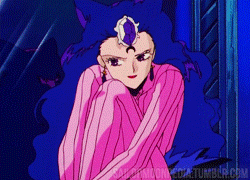

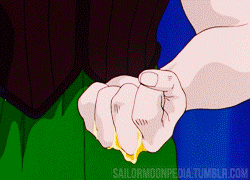
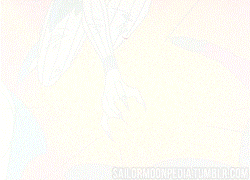




[CHARACTER] Koan.
Series: Bishoujo Senshi Sailor Moon
Kana: コーアン Romaji: Kooan
Role: Villain Type: Humanoid (formerly), human (currently) Alignment/Organization: Black Moon Clan (formerly) First appearance: Episode 60 Last appearance: Episode 86 Status: Alive Voice actor: Wakana Yamazaki
TRIVIA
Koan’s name is derived from the Japanese word for kermesite - “kouankou” (紅安鉱).
She was the youngest of the Ayakashi Sisters.
Much like her rival Sailor Mars, Koan’s element was fire.
In the manga, Sailor Moon killed Koan. Yet in the first anime adaptation, Koan survived and she was eventually purged of evil.
Koan’s signature attack was Dark Fire. In episode 63, Koan started to use Koan Dark Power Flip with her droid Dumble, but she was interrupted by Sailor Moon.
Other Sailor Moon characters that Wakana Yamazaki voiced are: Janelyn (episode 39), Reci (episode 51), Sister Maria (episode 133), Kyouko (episode 151), young Queen Nehelenia (episode 172), and the Glycina from the R movie.
#sailor moon#koan#ayakashi sisters#black moon clan#black moon clan (classic)#koan (classic)#sailor moon r#character#characters (classic)#sailor moon (classic)#villain#villains (classic)#dark fire#rubeus (classic)#episode 60#episode 63#episode 64#episode 70#episode 71#episode 72#episode 86#koan dark power flip#ayakashi sisters (classic)
513 notes
·
View notes



